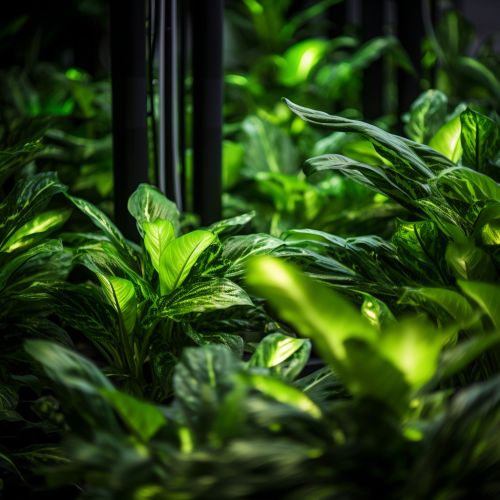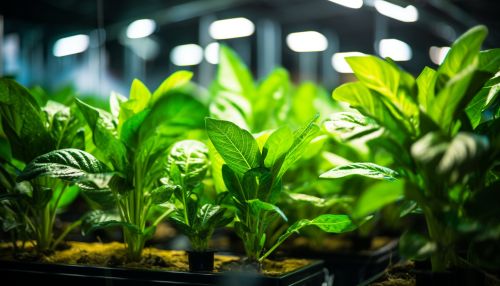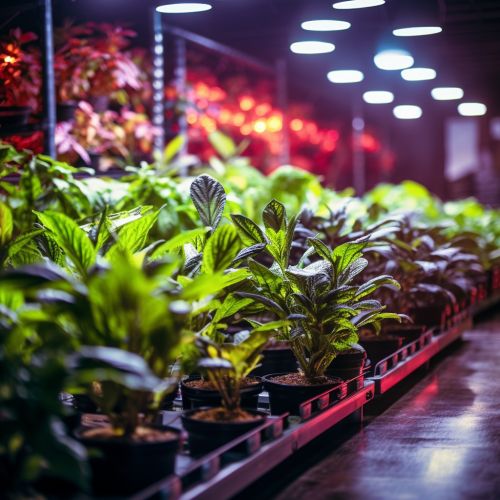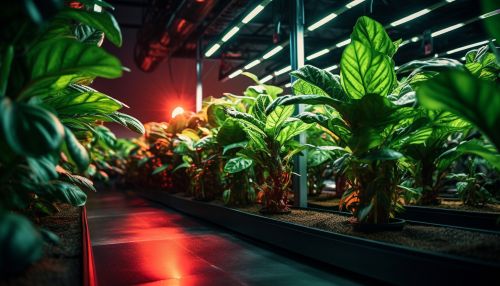Mechanisms of Plant Growth Under LED Lighting
Introduction
Plant growth is a complex process that involves numerous biological and environmental factors. One of the most significant environmental factors is light, which plays a crucial role in photosynthesis, the process by which plants convert light energy into chemical energy. Over the past several decades, advancements in technology have led to the development of Light Emitting Diodes (LEDs) as a viable source of light for plant growth. This article explores the mechanisms of plant growth under LED lighting, delving into the science behind this innovative approach to horticulture.


Light and Plant Growth
Light is essential for plant growth as it is the primary energy source for photosynthesis. The quality, quantity, and duration of light that a plant receives can significantly impact its growth and development. Light quality refers to the wavelength or color of light, quantity refers to the intensity or brightness of light, and duration refers to the photoperiod or length of time that a plant is exposed to light.
Photosynthesis and Light Spectrum
Photosynthesis is the process by which green plants, algae, and some bacteria convert light energy, usually from the sun, into chemical energy in the form of glucose. This process primarily occurs in the chloroplasts of plant cells, where light energy excites electrons in chlorophyll, the pigment responsible for the green color in plants.
LED lights can be designed to emit specific wavelengths of light, allowing for the optimization of light quality for plant growth. The light spectrum is divided into different regions, including ultraviolet, visible (which includes violet, blue, green, yellow, orange, and red), and infrared. Plants primarily use blue and red light for photosynthesis. Blue light (wavelengths of 400-500 nm) is crucial for plant growth as it promotes the growth of leaves and stems and regulates plant morphology. Red light (wavelengths of 600-700 nm) is also essential as it promotes photosynthesis and flowering.
LED Lighting for Plant Growth
LED lighting technology has revolutionized the way we grow plants, especially in controlled environments like greenhouses and indoor farms. LEDs offer several advantages over traditional lighting systems, including energy efficiency, longevity, and the ability to tailor the light spectrum for specific plant needs.
Energy Efficiency and Longevity
LED lights are more energy-efficient than traditional lighting systems like fluorescent lights or high-pressure sodium lamps. They convert a higher percentage of electrical energy into light, reducing the amount of heat produced and energy wasted. This efficiency translates into lower operating costs and a smaller carbon footprint, making LED lighting a more sustainable option for plant growth.
In addition to being energy-efficient, LED lights also have a longer lifespan than traditional lighting systems. They can last up to 50,000 hours, reducing the need for frequent replacements and further contributing to their cost-effectiveness and sustainability.
Tailoring the Light Spectrum
One of the most significant advantages of LED lighting is the ability to tailor the light spectrum to the specific needs of plants. Different plants have different light requirements, and the ability to customize the light spectrum allows for optimal plant growth. For example, lettuce may require a higher proportion of blue light to promote leafy growth, while tomatoes may benefit from a higher proportion of red light to encourage flowering and fruiting.


Impacts of LED Lighting on Plant Growth
Numerous studies have been conducted to investigate the impacts of LED lighting on plant growth. These studies have shown that LED lighting can enhance plant growth, improve plant health, and increase crop yields.
Enhanced Plant Growth
LED lighting can enhance plant growth by providing optimal light conditions. By adjusting the light spectrum, intensity, and photoperiod, growers can manipulate plant growth and development. For example, increasing the proportion of blue light can promote the growth of leaves and stems, while increasing the proportion of red light can encourage flowering and fruiting.
Improved Plant Health
LED lighting can also improve plant health. Plants grown under LED lights often exhibit increased resistance to diseases and pests. This is likely due to the improved growing conditions provided by LED lighting, which can enhance plant vigor and boost the plant's natural defenses.
Increased Crop Yields
LED lighting can increase crop yields, especially in controlled environments like greenhouses and indoor farms. By providing optimal light conditions, LED lighting can maximize photosynthesis, leading to increased plant growth and productivity. This can result in higher crop yields and improved crop quality, making LED lighting a valuable tool for modern agriculture.
Conclusion
LED lighting offers a promising solution for optimizing plant growth. By providing a customizable light spectrum, energy efficiency, and longevity, LED lights can enhance plant growth, improve plant health, and increase crop yields. As technology continues to advance, the use of LED lighting in horticulture is likely to become even more prevalent, offering exciting possibilities for the future of agriculture.
